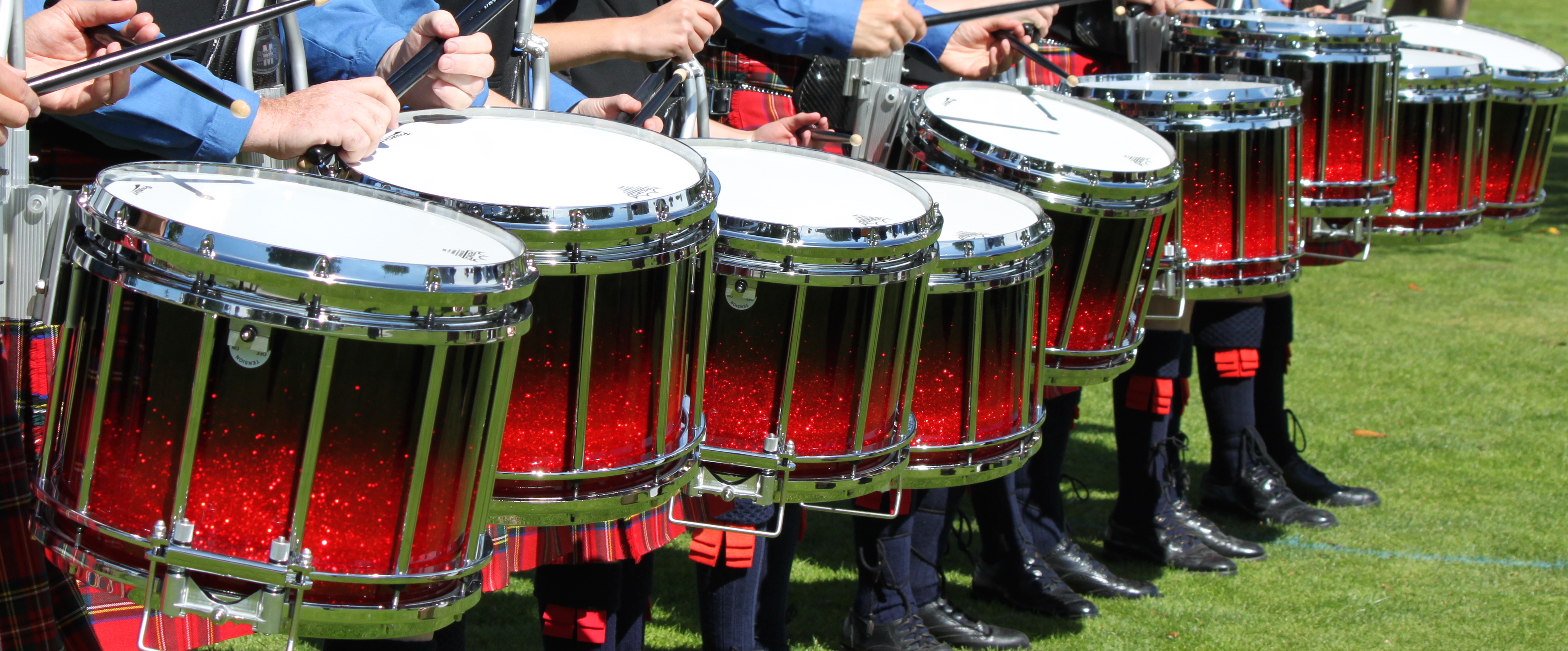You may have noticed that in some pipe bands the bass and tenor drummers wear animal skins. The burning question is: Why? Well, the tradition began in the British military bands in the 1700’s. They discovered that the Africans that joined the Army were really good at playing drums and keeping beats. These drummers joined the 29th Regiment of Foot and later the Royal Fusiliers. These same Fusiliers would be sent to Canada in 1773 and serve in Montreal, Quebec, Fort Chambray, and Fort St. Johns. Every drummer in the Fusiliers up to 1899 was of African descent.
These African drummers began the tradition of wearing the leopard skins when in uniform. These skins helped protect the uniform from wearing out because the drums were so large and bulky. The tradition continues in certain British and Canadian regiments today. Some independent pipe band drummers also wear the animal skins, such as The Pipes and Drums of the Edmonton Police Service,who use wolf pelts and a cougar pelt, the Thistle Pipe Band from Stockholm, Sweden, and the Lewis Pipe Band from Stornoway, Scotland.

(Photo: Joan Kennedy)
According to the Regimental Drum Majors Association, there are rules as to how Animal Aprons are worn and by whom they are worn
Drummers: As prescribed by the Regiment or band
• Worn with No. 1 Dress only; never in shirt sleeves, patrol jacket, Prince Charlie, or Day Jacket.
• Some regiments allow the tenor drummers to wear a full leopard or tiger skin similar to that worn by the bass drummer.
• Some English Line Regiments allow the side drummers to wear a full skin or an apron of the same skin as the bass drummer.
• Be mindful of endangered species laws and secure necessary permits when transporting skins across borders, if authentic skins are used.
Now the question has been answered. Those animal skins serve a purpose, even though many are now imitation fur. They protect the drummers uniforms and their drums.
The Calgary Highlanders have a great post up if you want to learn more!
